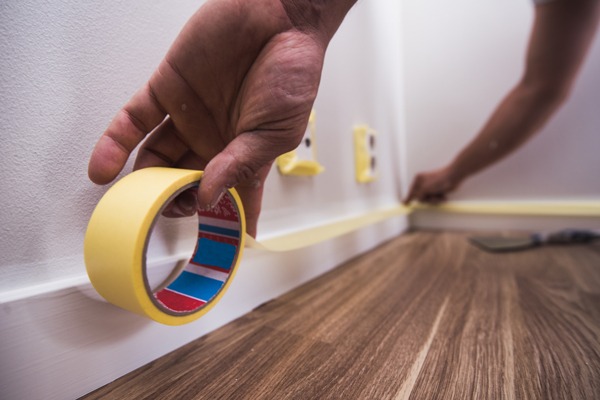Whether you’re painting a surface for the first time or looking to revamp an old paint job, a fresh coat of paint is an excellent way to transform the look of anything! Hiring a professional to handle small paint jobs can be expensive and is not always practical, which only leaves the option of Doing It Yourself. When painting a surface, it can be tempting to jump right in and cover a surface with your colour of choice, but to make sure you’re painting like a pro, prepare the area first and have the right tools on hand.
To get you painting like an expert in no time, we’ve created the ultimate beginners’ cheat sheet that covers surface prep, tools and undercoats.
SURFACE PREP
Proper preparation will be the deciding factor in how long your paint job will last. Be sure you:
- Wipe down the object or surface to remove any existing dirt, cobwebs, dust or stains. This is often the step that gets skipped the most in painting, but is one of the most crucial. Why is it so important? If your surface has any dirt or grime, it will prevent your paint from adhering to the wall properly and stop the end result from looking as polished as it should. Soap and water or sugar soap will do the trick in making sure your area is clean and prepped.
- Check for moisture damage or mould. Black mould is very common in moist areas that don’t get much natural light. Be sure to clean mould off an area with bleach or cleaning vinegar before painting to avoid contaminating your paintbrush.
- If the surface is rough or uneven, be sure to sand it or even it out with plaster for walls or caulk for windows and door joints. This will ensure a smooth, even surface for your paint.
TOOLS
As fun as finger painting as kids was, you’ll need to get some proper painting tools ready before you start.
- TAPE
If you are planning on painting directly next to another surface that you don’t want to be painted, like glass, skirting boards or light switches, then taping over the surface you want to keep paint free will be your best paint tip. Remove tape carefully and within the timeframe as guided by the brand. Pro tip: If you want to add stripes into your painting design, tape is a great way to section off your design.
- DROP SHEETS
It doesn’t matter if you’re a professional or first-timer – mess can happen. Making sure you put down drop sheets to protect your floors or furniture from any drips or splatters will cut your clean up time in half!
- PAINT ROLLER
A paint roller is ideal for making quick work of larger spaces like walls and allows you to distribute the paint more evenly to avoid streaky patches.
- PAINT TRAY
This is a must-have if you are planning on painting with a roller.
- LADDER
Safety first! If you have any out of reach areas, please do not attempt any balancing acts on nearby furniture. A secure ladder will keep you steady as you paint those high-up places.
- SMALL BRUSHES
Having smaller paint brushes is ideal for painting objects like furniture, touching up trims and other small surface areas.
UNDERCOATS
Using an undercoat will save you a lot of time and money in the long run. Not just from cutting down on the number of coats of paint you’ll have to use, but also in making sure your paint lasts. An undercoat provides a layer for your paint to adhere to, smooths out the surface and makes sure the chemical make-up doesn’t react poorly with your new paint.
Not every undercoat is made the same, with different materials requiring different kinds of undercoat. View our full range to see which undercoat is suitable for your surface.
PAINT
Now that you’re all prepped up, it’s time to paint! Depending on the surface and colour, you may have to do two or three coats to get the desired effect. Make sure to let each coat dry completely before beginning another coat. Last but not least - have fun with it and make the project your own!
Pro Tip: Paint your ceilings first, then walls and finally your trims and doors.

 Back to Colour Together page
Back to Colour Together page

